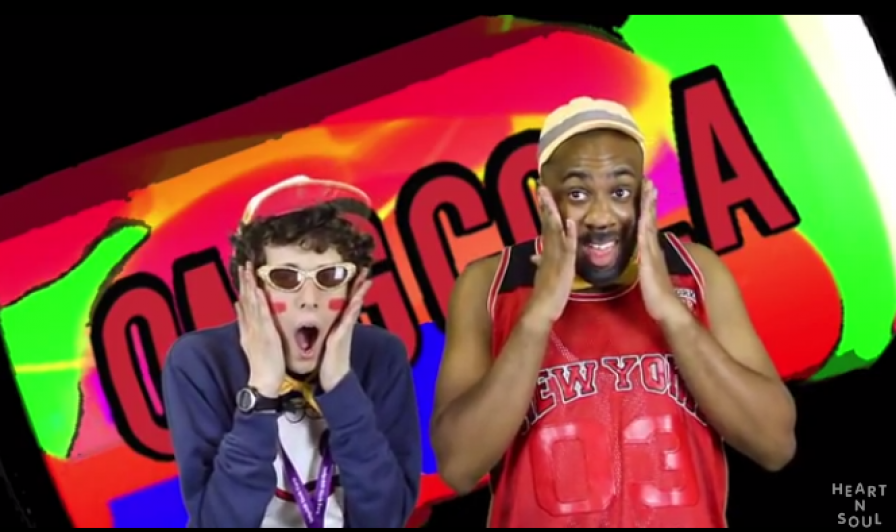The Making of OMG Cola! - Part 1

I wanted to talk about a recent project I was a part of - OMG Cola! - a song written and recorded by a group of young people with learning disabilities. Which utilised digital technology, enabling a large number of participants to collaborate on one song together at the same time.
The project was undertaken at Do Your Own Thing, run by Heart n Soul. These are creative sessions which happen once per month on Saturday afternoons. They are for young people with learning disabilities (aged 10-25 years) new to the arts, training in music, dance, drama, DJing and digital arts. Young people get the chance to work on exciting projects with a range of professional tutors. They decide what they want to do, and work with their tutors to make it happen.
The OMG Cola project developed over about 18 months and ended up encompassing digital music making, dance, video, art and performance. There were a few final outcomes from the project but we think the best way to introduce it is by watching and listening to the video for... “OMG Cola”
I’d like to talk through how the music was created for the song with the group that I was working with. The initial idea was that the music group at Do Your Own Thing wanted to write and record a song. So we set out with the aim to produce a song in collaboration, with each element coming from a different group of people. The music group can be very fluid, with who attends each month changing frequently and we wanted to explore how people could write together without everyone having to come to every session.
As well as giving the group the opportunity to create music in a different way. We also saw it as a way to explore a few outcomes -
- Break down the composition and recording process of songs by focussing on one element at a time
- Explore the use of iPads as instruments
- Increase the skills and knowledge of tutors in the use of digital music technology
There was no specific starting point other than having a session focussing on drums and rhythm. Starting with the drums came from the fact that we normally only have one drum-kit set up in the room with a large number of people and everyone wants to play the drums. So the prospect of having 3 drum kits in a room with 3 people and being able to play as loud as they wanted was very attractive for many!
As we were doing this we thought it would be a good idea to integrate recording and the use of Ableton Live into the session to create an access point for people that might want to create beats but have limited ability. The result of this was that when building up the song later we wouldn’t have to rely on stock beats or sounds within the computer. It would be the group’s playing and rhythms as loops.
I will outline what technology we used in each section, the process of working with the groups and what we did in-between each part of the process in post-production.
DRUMS
Technology: A drumkit with 3 microphones (SM58s and a SM57 - fairly low-cost microphones and typical in any practice space) An SM57 on the snare, and the SM58s on the kick drum & one overhead the whole kit. This was all then running through Ableton Live. We had the output going to headphones & a PA that was already in the room. *note: We had 3 drumkits in the room but only mic’d up one due to limited resources. If it was possible it would have been great to mic up all three kits as we did miss some excellent playing when people weren’t on the mic’d kit, also being unable to record ‘duets’ between people in real time was a shame.
We worked with groups of 2-3 people, in two sessions.
People would play and I would record everything, sometimes I got people to repeat beats that sounded good to see if they could expand on them. As we were going along we played back the recordings and together we identified beats and loops that people liked.
We could then get other participants to play over these loops adding syncopation, flavour and variety to the beats from before. This meant people’s different ways of playing could compliment each other. Someone with more ‘space’ in their playing would open up the possibilities for someone to alter or change the beats already recorded.
For people with more limited ability we’d experiment by building up beats, hi-hats first and then the kick, then snare and creating something by collaborating with the technology.
After this initial session together we identified 3-4 main beats, created loops out of these and tried to make a couple of variations on each beat.
Next time i’ll talk about creating the basslines for the song using iPads!
